In my view, the key of C major is integral to music and serves as a foundation for much of Western harmony.
Generally speaking, the key of C major includes the chords C major, D minor, E minor, F major, G major, A minor, and B diminished. It would definitely serve you to learn these chords, each scale degree, including the triads as well.
The 7 Notes of C Major
The first thing you need to know are the notes of C Major.
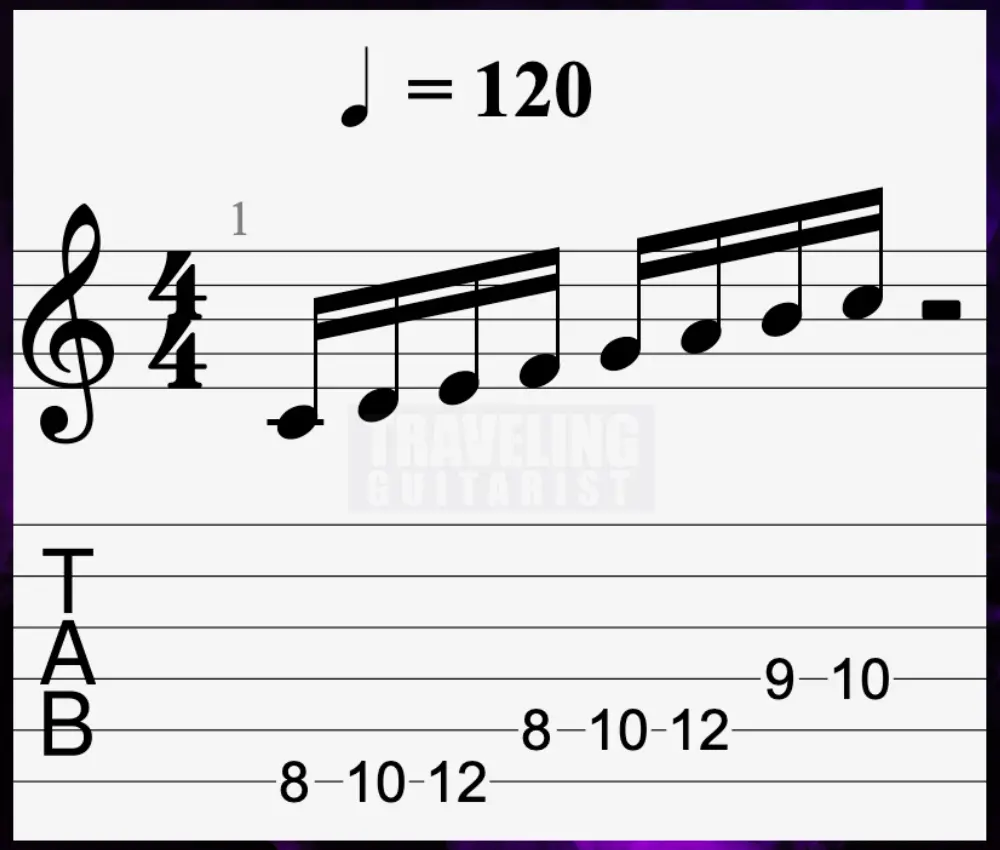
The Scale Degrees of C Major
1 – 2 – 3 – 4 – 5 – 6 – 7
Whole Tone – Whole Tone – Semi Tone – Whole Tone – Whole Tone – Whole Tone – Semi Tone
What makes a chord? You need a root, third, and a fifth to make a standard chord in Western harmony.
A major chord, such as C major, consists of a root (C), a major third (C to E), and a perfect fifth (C to G).
A Major 3rd Interval is a distance of 4 semi-tones (or 4 frets).
A Minor Chord, such as D Minor, consists of a root (D), a Minor 3rd (D to F), and a Perfect 5th (D to A).
A Minor 3rd Interval is a distance of 3 semi-tones.
A Diminished Chord, such as B Diminished, consists of a Root (B), a Minor 3rd (B to D) and a Diminished 5th (B to F).
A Diminished 3rd interval is a distance of 2 semi-tones.
We’ll reference this information throughout the rest of the article.
All 7 Chords of C Major
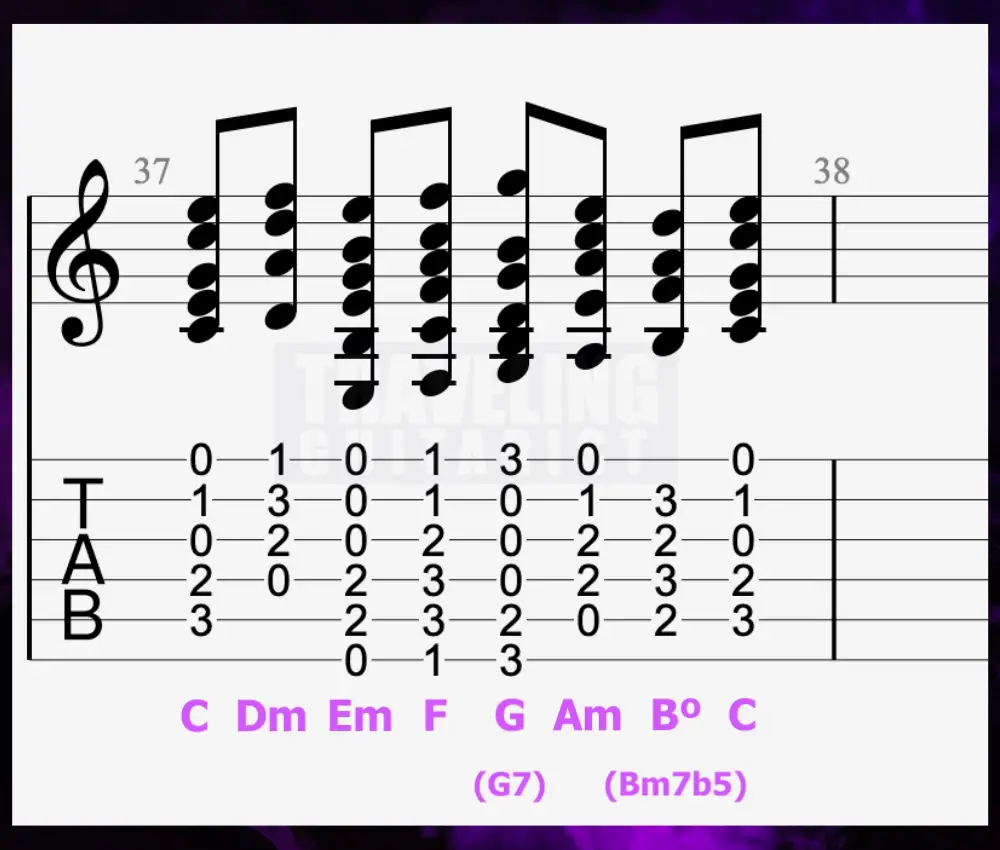
Below, we’ll dissect each chord in terms of its triad (three-note) and extended (four-note) variations. Keep in mind that all chord voicings will apply to a six-string guitar tuned to E standard.
1) C Major (Cmaj7)
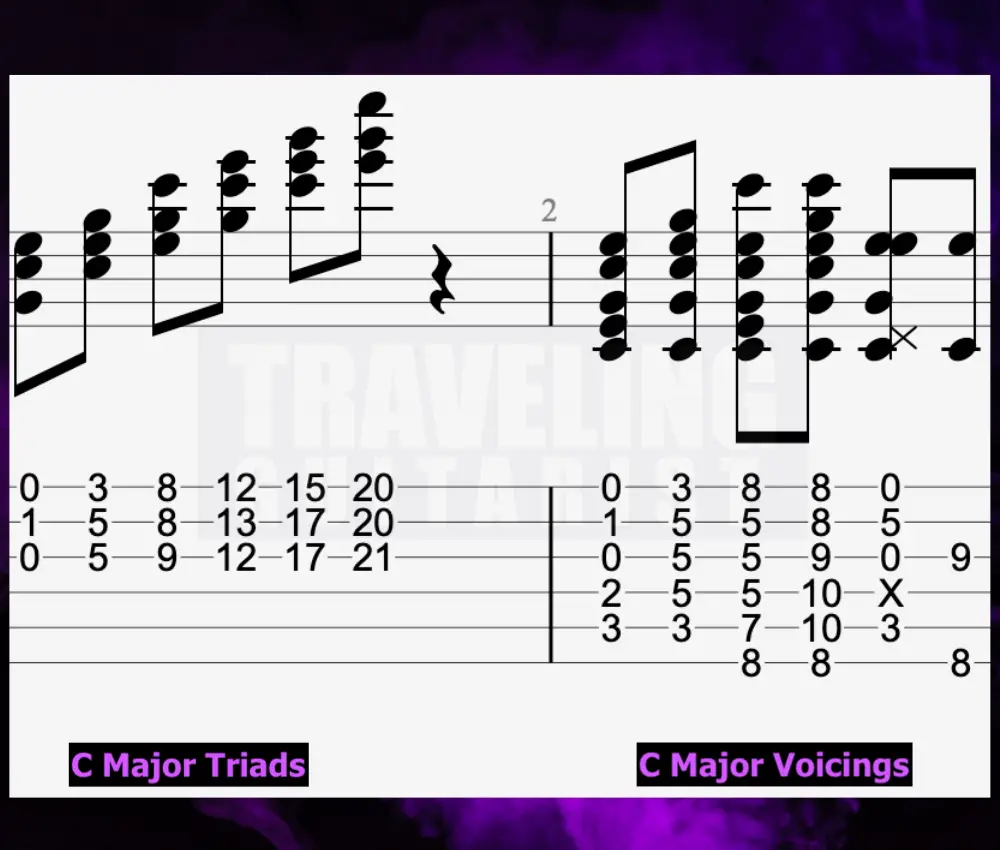
C major has the notes C, E, and G.
The E in C Major is the major third. It’s the part of the chord that gives it its major sound because the distance between these two notes is a major 3rd (4 semitones).
We can turn this into a C Major 7th chord if we add the seventh degree of C: B natural.
2) D Minor (Dm7)
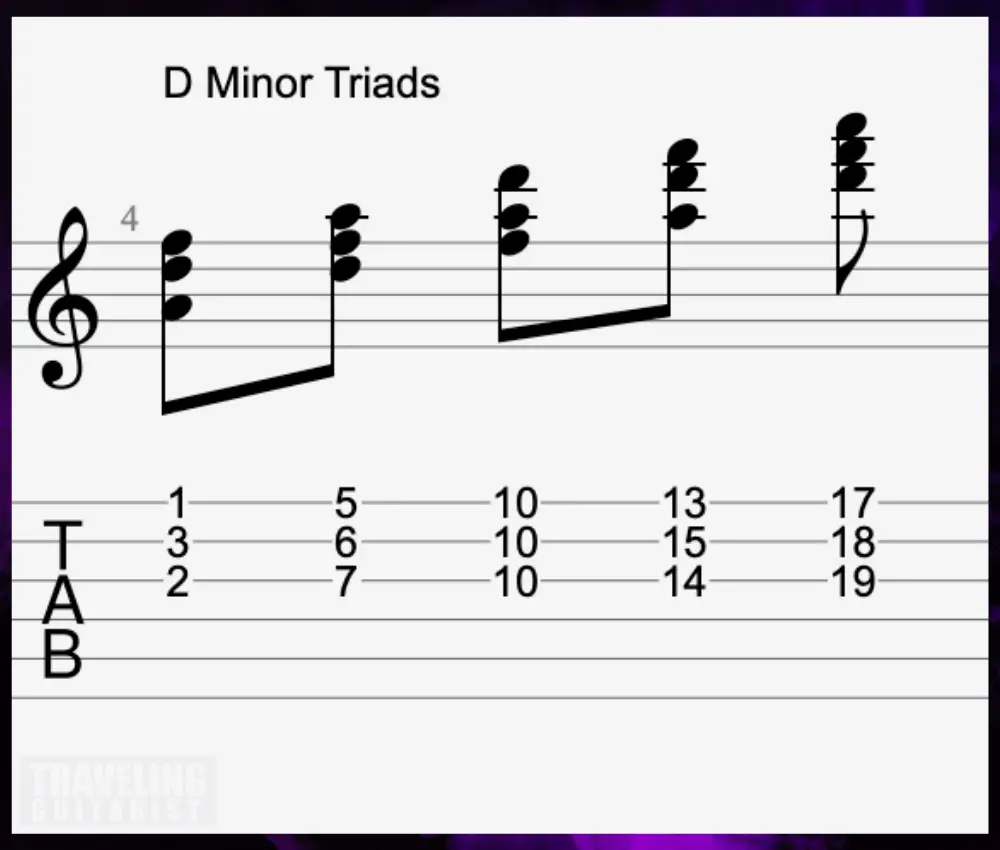
D minor requires the notes D, F, and A.
The F natural note is the operative tone that makes the chord minor. This is because the interval between D and F is a minor third (3 semi-tones).
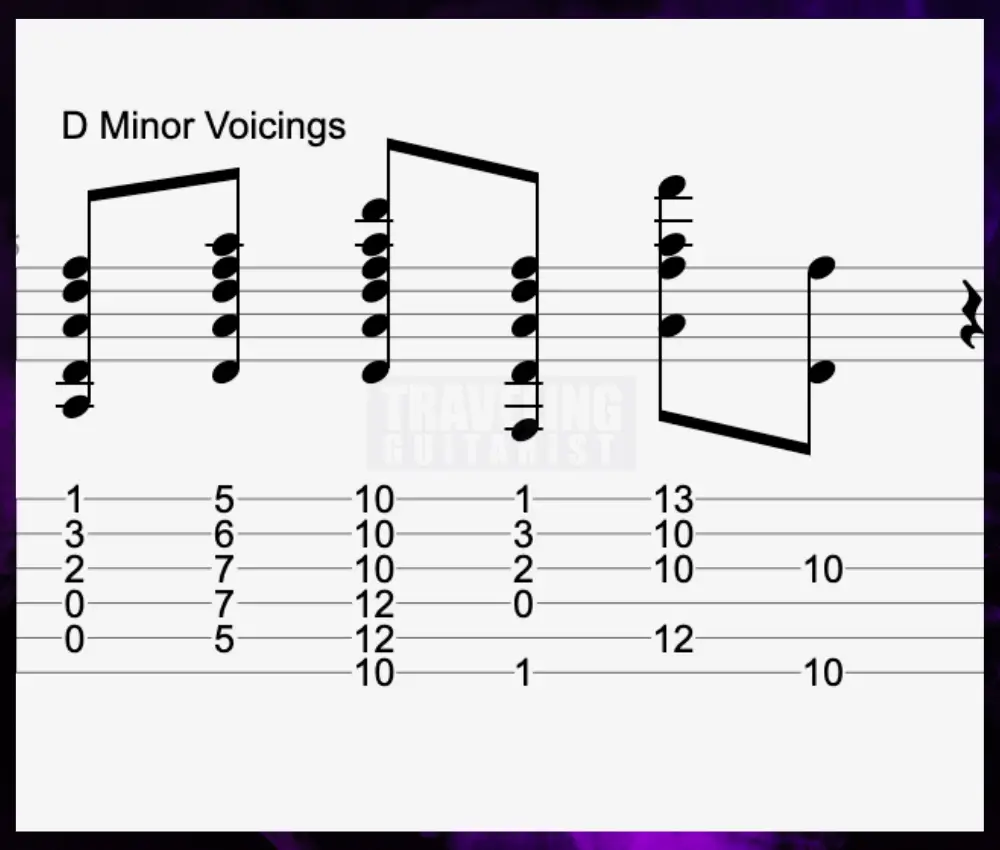
By adding a C natural note to the chord, we achieve a Dm7.
3) E Minor (Em7)
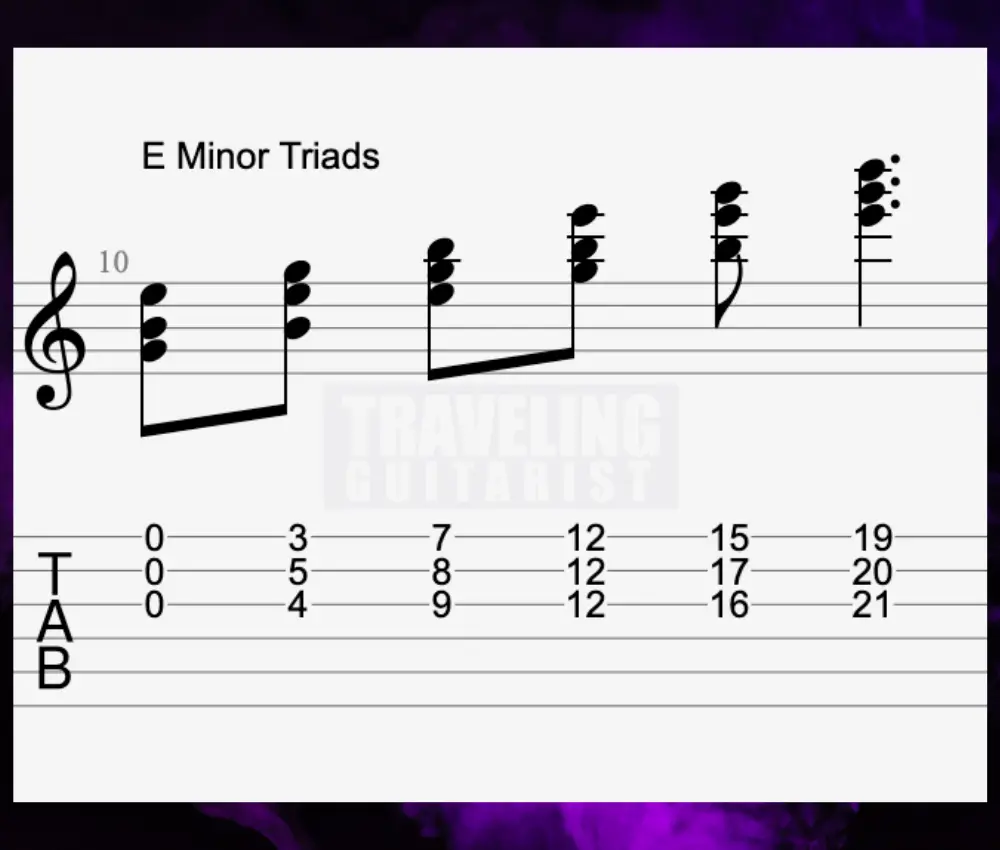
The notes of the E Minor chord are E, G, and B.
The G is the part of the chord that gives the E Minor its minor tonality. This is because the distance between the two is a minor 3rd (3 semi-tones).
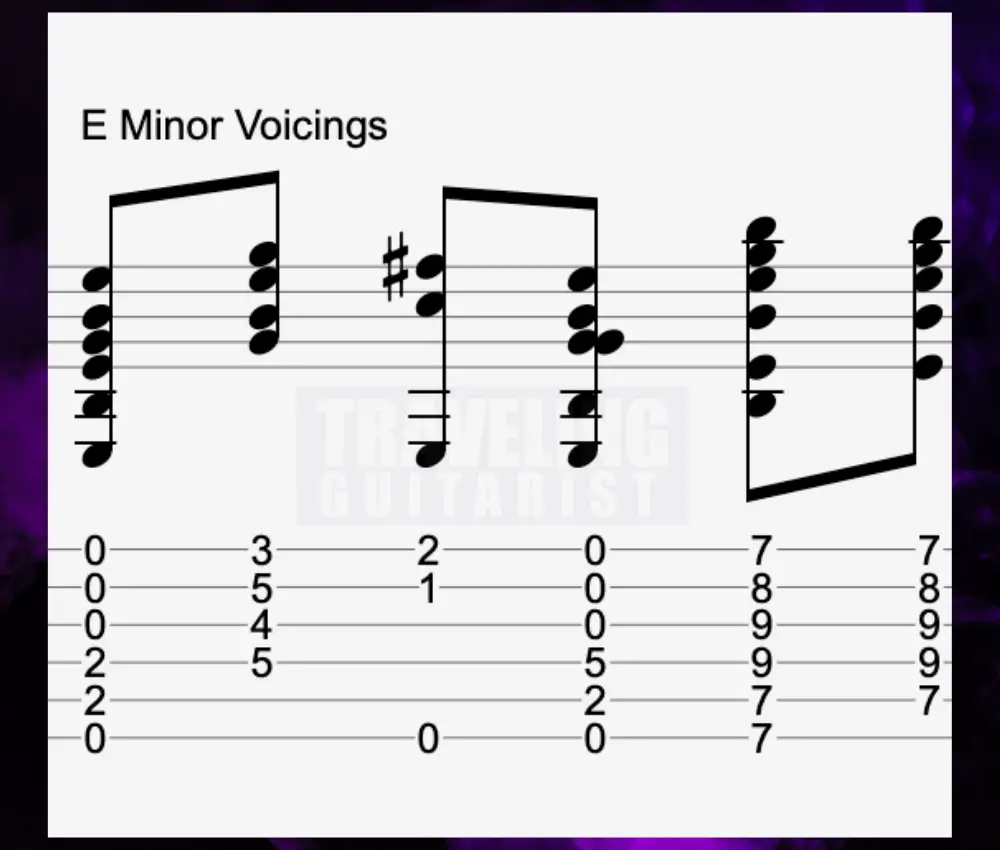
By adding a D natural note to the chord, we get Em7.
4) F Major (Fmaj7)
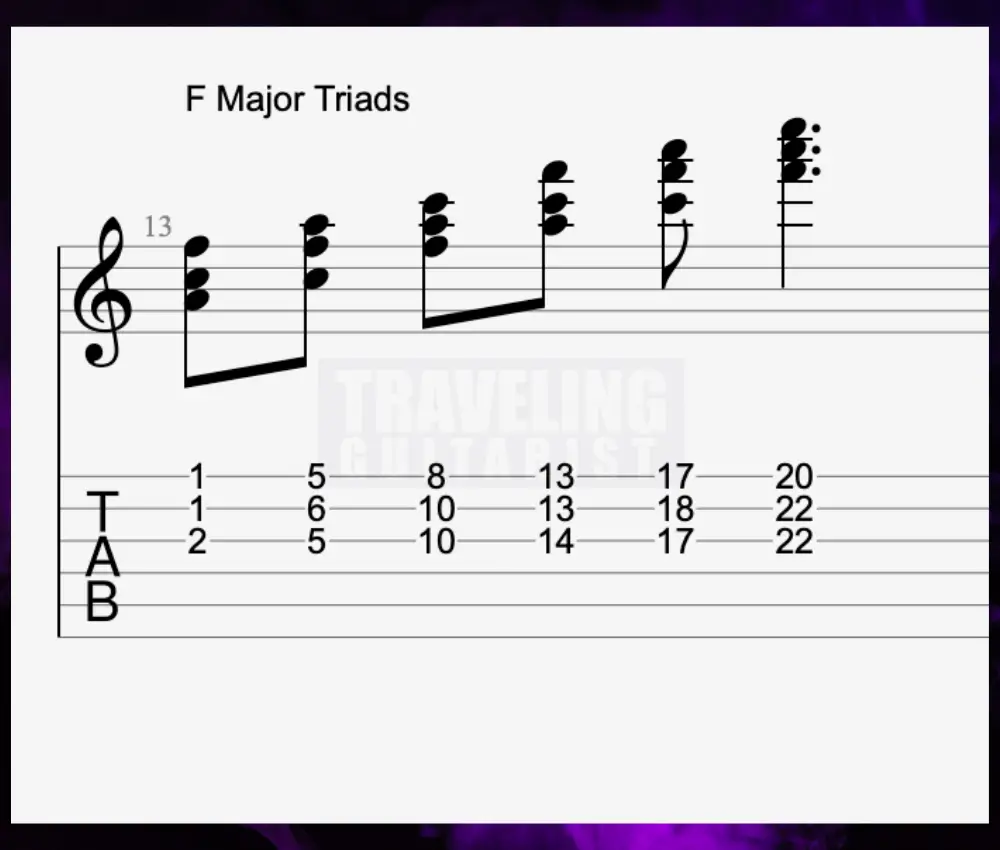
The notes of F major are F, A, and C.
The A of the F Major chord is the part of the chord that creates the “major” sound, because the distance between the F and A is a major 3rd (4 semi-tones).
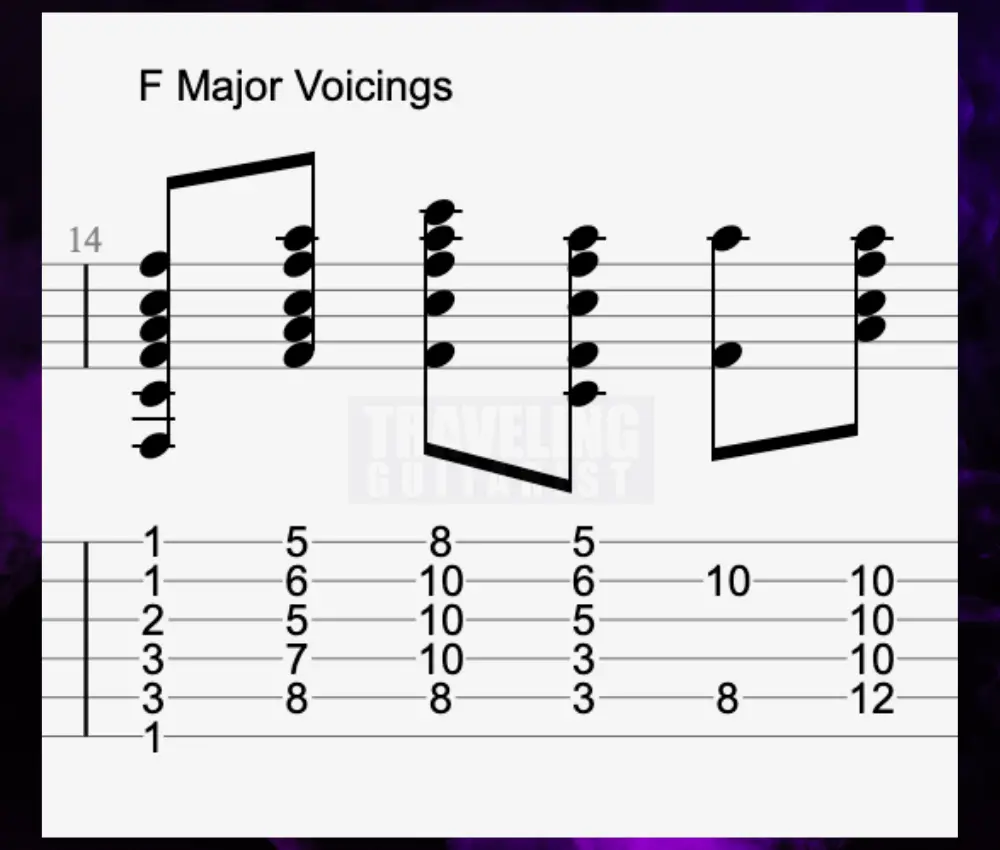
Our basic F major triad extends to become a Fmaj7 chord by adding the note E natural.
5) G Major (G7)
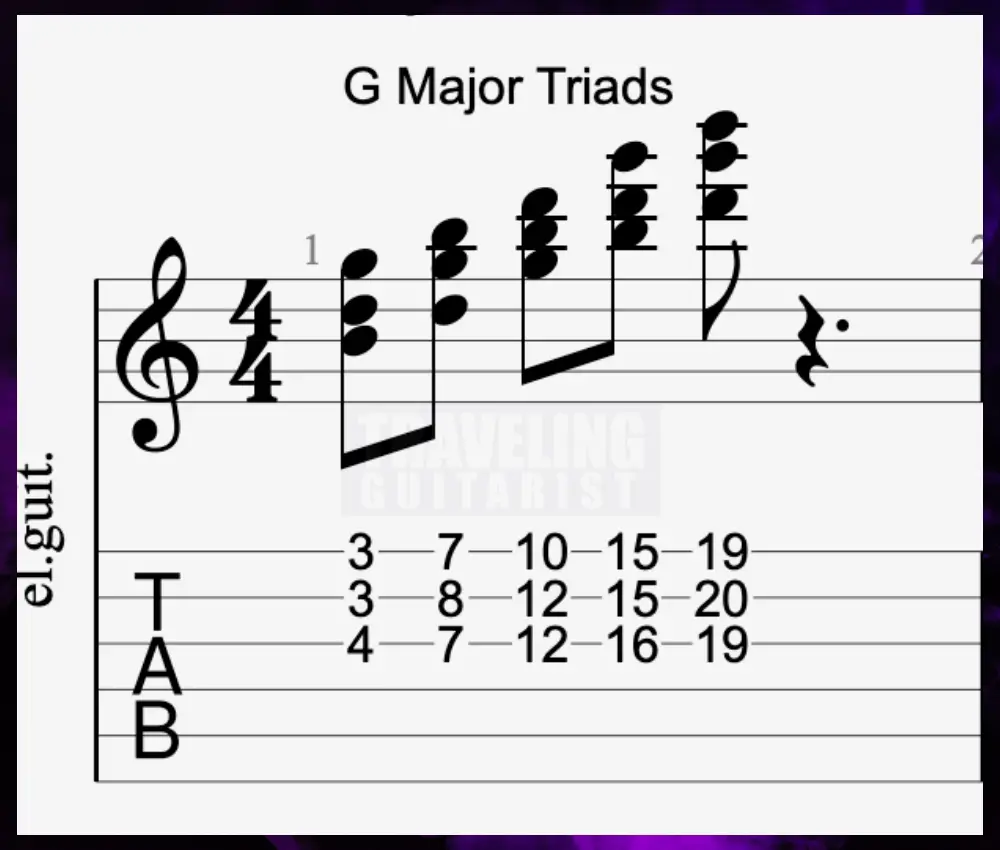
The construction of a G major chord calls for the notes G, B, and D.
What gives it the major sound is the major 3rd from the G to the B (4 semi-tones).
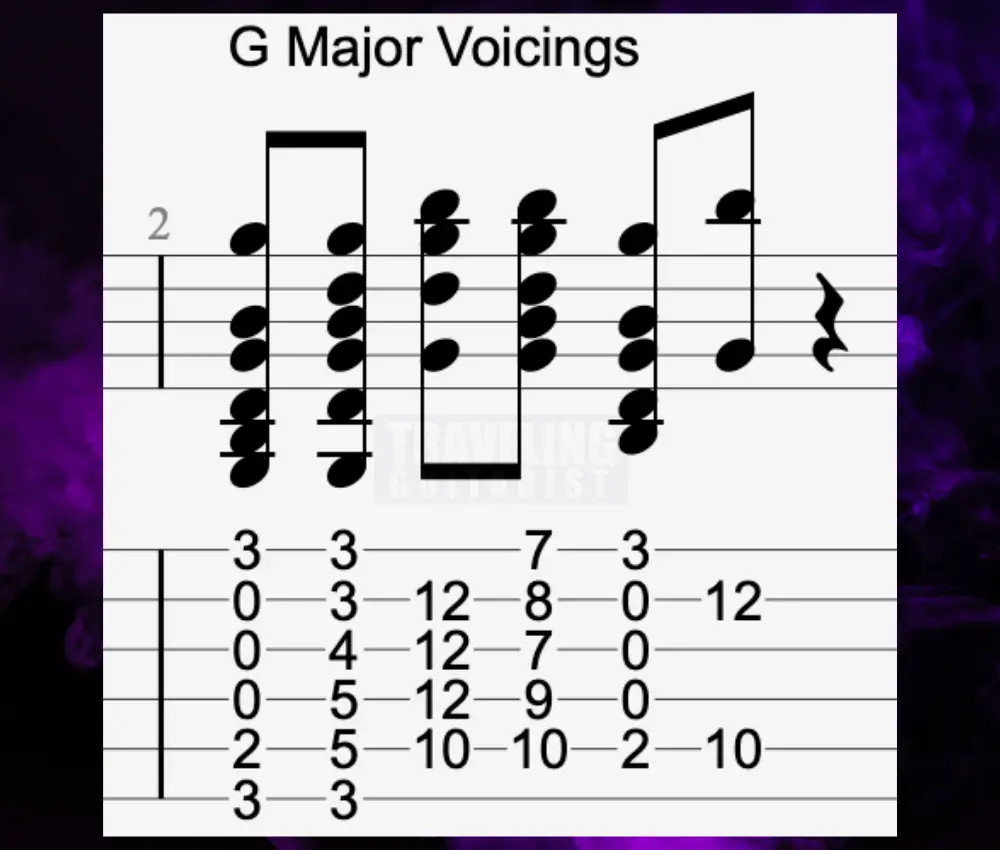
When we add the note F natural to our chord, it becomes a G dominant seven or G7. This means it’s a major chord with a minor seventh and has a dominant function within the key.
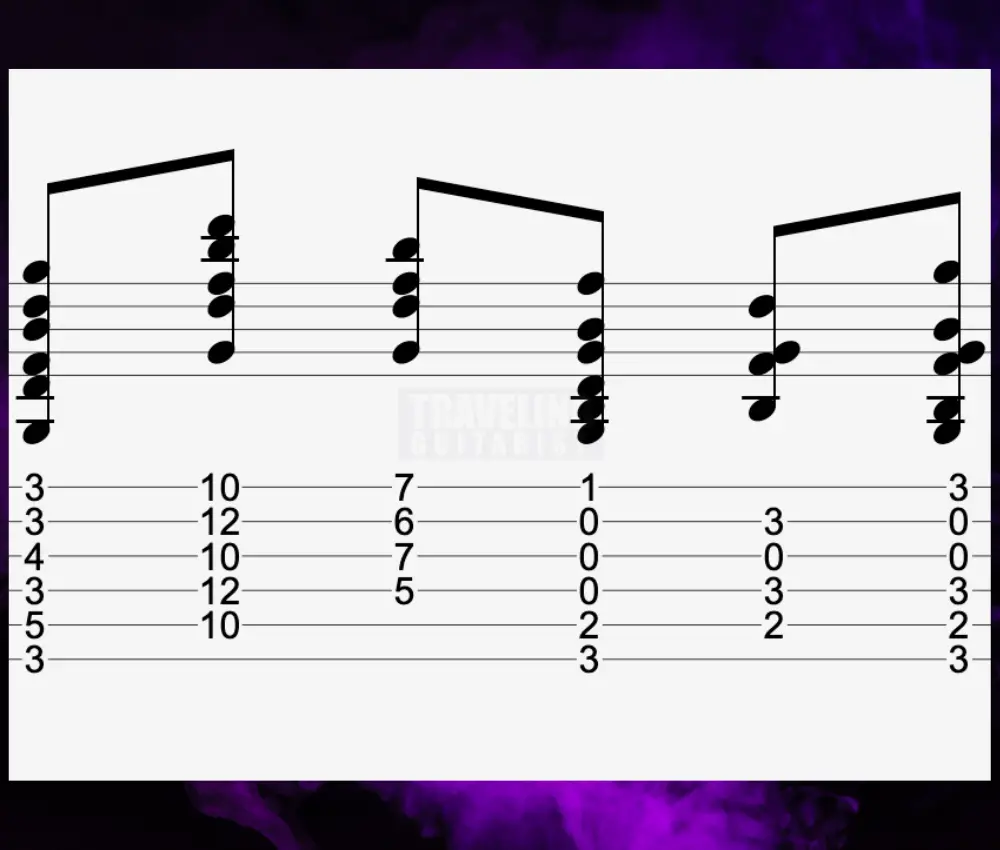
We’ll largely use a G7 to harken back to the tonic chord, C major.
6) A Minor (Am7)
The notes A, C, and E, A minor claims the honour of being C major’s relative minor.
What gives the A minor chord its “minor” sound is the C, which is a minor 3rd from the A note (3 semi-tones).
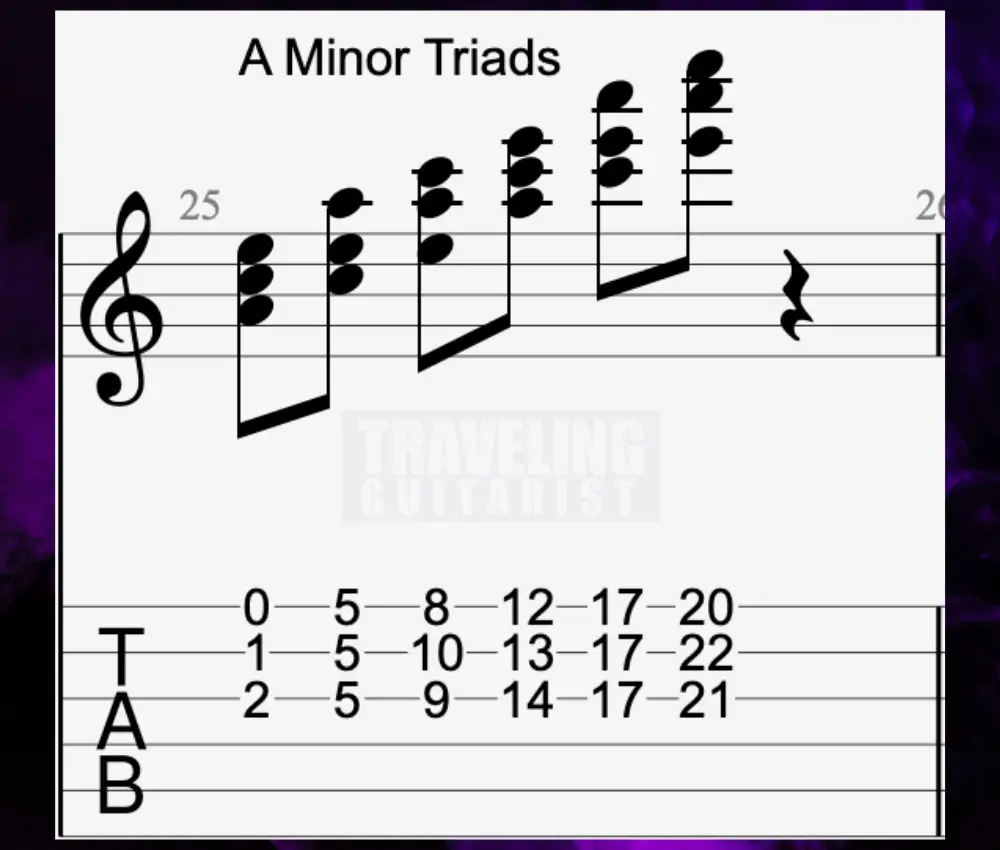
Add a G note to make it an A minor 7 chord.
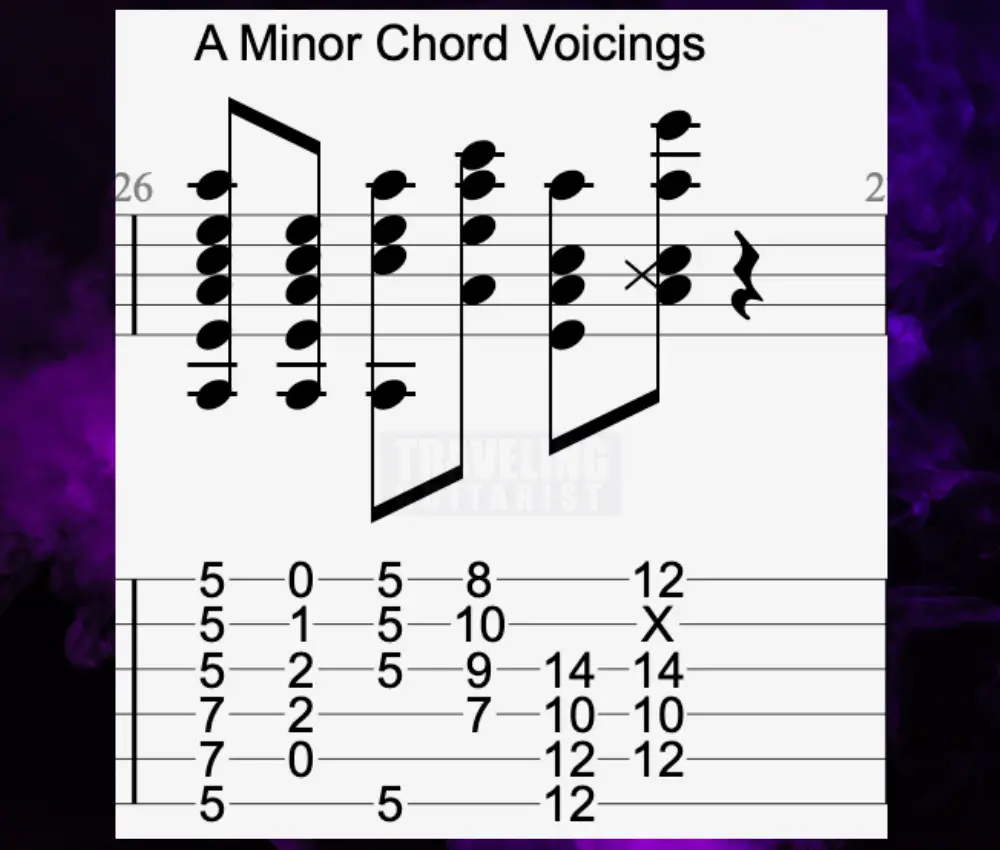
7) B Diminished (Bm7b5)
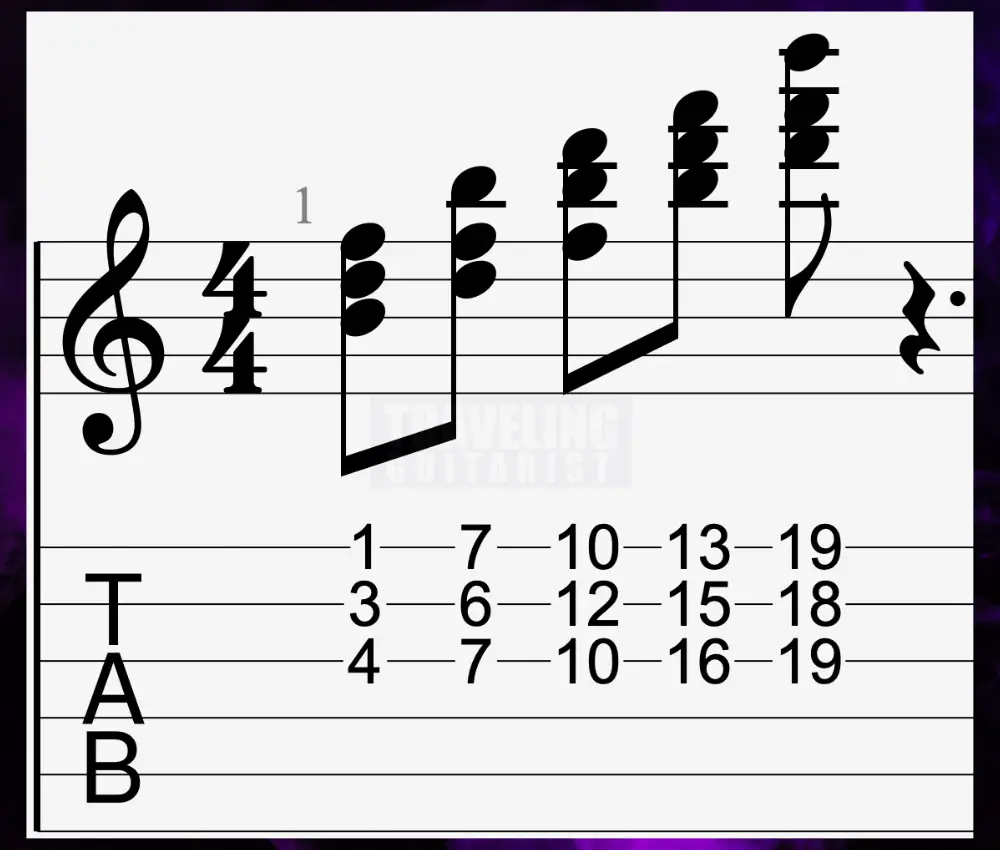
As a triad, B diminished only requires the notes B, D, and F.
The qualities that make this chord diminished are the minor third (3 semi-tones) between B and D and the flat fifth between B and F.
B to F is what’s called a diminished fifth (or 6 semi-tones).
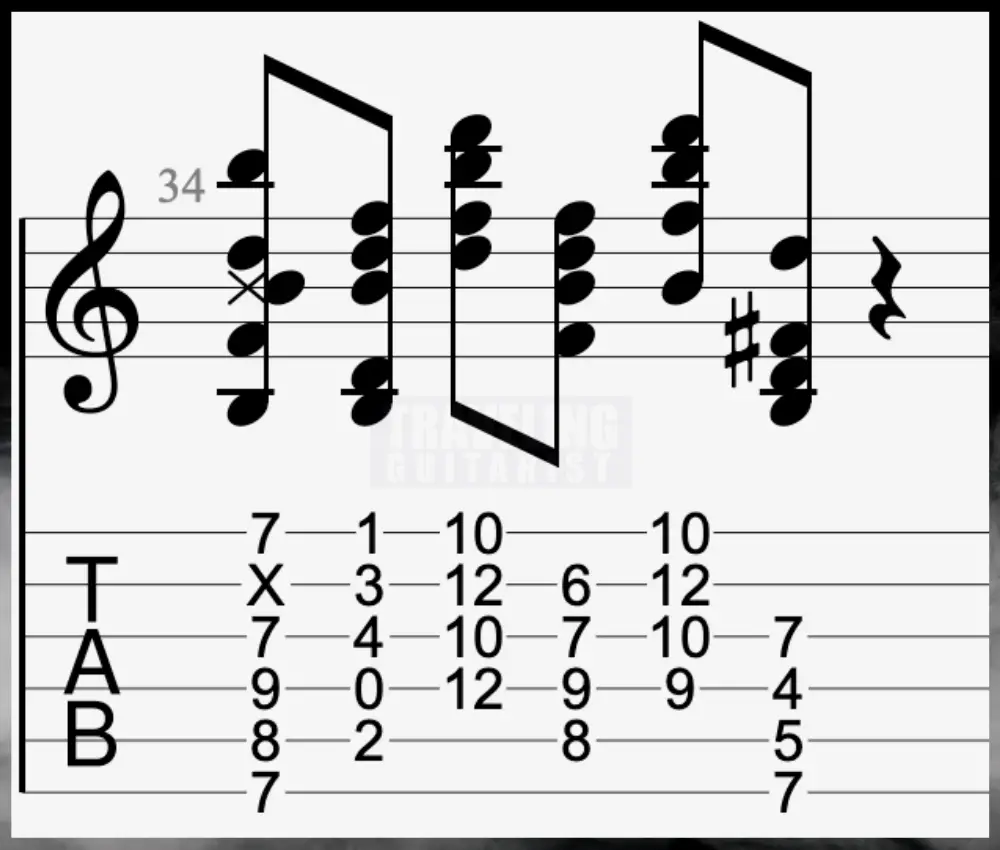
If you add the A on top, a minor 7th from the B, it makes it a Bm7b5.
What Are The Primary & Secondary Chords of C Major?
Every key has three primary chords and four secondary chords.
In a way, you can think of primary chords as primary colours and secondary chords as secondary colours.
The way you use and blend primary and secondary chords adds personality and emotional tone to your musical work.
It’s also true that you could paint your auditory canvas with nothing but secondary chords to give a new take on a simple-sounding key like C major.
Primary
In C major, our primary chords are C major, F major, and G major. Whichever chord you want to think of as red, yellow, or blue is up to you.
Theoretically, our tonic, C major, wants to progress to the sub-dominant, F major, which then wants to climax at the dominant chord, G major, before resolving back to the tonic.
These are the “lines” of our musical colouring book. Lines that we do not have to stay inside of.
Secondary
In full, our secondary chords are D minor, E minor, A minor, and B diminished.
To paint a fuller picture, we can use secondary chords to add a bit more personalization to the work.
Let’s say that we find ourselves starting out with primary chords, moving from C major to F major. We could easily move on to a G7, but what else could we choose?
G7 has the notes G, B, D, and F. The last three notes of G7 make up the entire B diminished triad. Instead of transitioning to Bdim, however, we could use the extended Bm7(b5).
Learning to see chords for their similarities instead of their differences is the key to using primary and secondary chords effectively.
The 3 Major Modes of C Major
As we’ve seen, the C major scale climbs through seven notes before repeating again. However, we could begin the scale at any one of those degrees to explore a mode of the C major scale.
Similar to primary chords, C major has three major modes: Ionian, Lydian, and Mixolydian.
1) C Ionian
The Ionian scale is the standard major scale.
Play the notes of C Major over a C Major to hear what the ionian mode sounds like.
We start at C and work our way up or down to the next octave of C.
You can use standard chord progressions in the Ionian mode because we want it to be clear that our root is C major.
2) F Lydian
The Lydian mode of C major starts and ends with F.
Play the notes of C Major over the F Major chord to hear what the F Lydian mode sounds like.
However, to make our chord progression sound distinct from the Ionian mode, we want to focus on its special qualities.
Naturally, we’ll want to use chords that share overlap with our F major triad without using a chord that leads the ear back to C major.
Additionally, the Lydian scale is distinctive due to its inclusion of a sharp fourth degree. While we don’t actually raise a note, it is relatively sharp compared to the F major scale.
3) G Mixolydian
The G Mixolydian of C Major starts on G and goes up to G.
Play the notes of C Major over a G7 chord to hear what that Mixolydian mode sounds like.
To play convincingly in G Mixolydian, we’ll follow the same basic principles discussed for F Lydian. However, Mixolydian’s defining tone is its flat seventh degree.
Be sure not to utilize any chord that features a tritone, such as G7 or B diminished. These chords are telling of the “true” key and lead the ear back to C major.
Do you have any questions about anything? Let me know what you think should be added to the article in the comments below (including any mistakes).
Other Articles You May Be Interested In
- The Guitar Chords of D Major
- What Are the Most Beautiful Guitar Chords? [ANSWERED]
- What Guitar Chords Are Sad? [With Examples & Explanation]
- Why Is It Important To Learn Chords on Guitar? [SIMPLE]
- Why Triads Are Important To Learn on Guitar [ANSWERED]
- Free Fretboard Memorization Cheatsheet


 Written By :
Written By :
